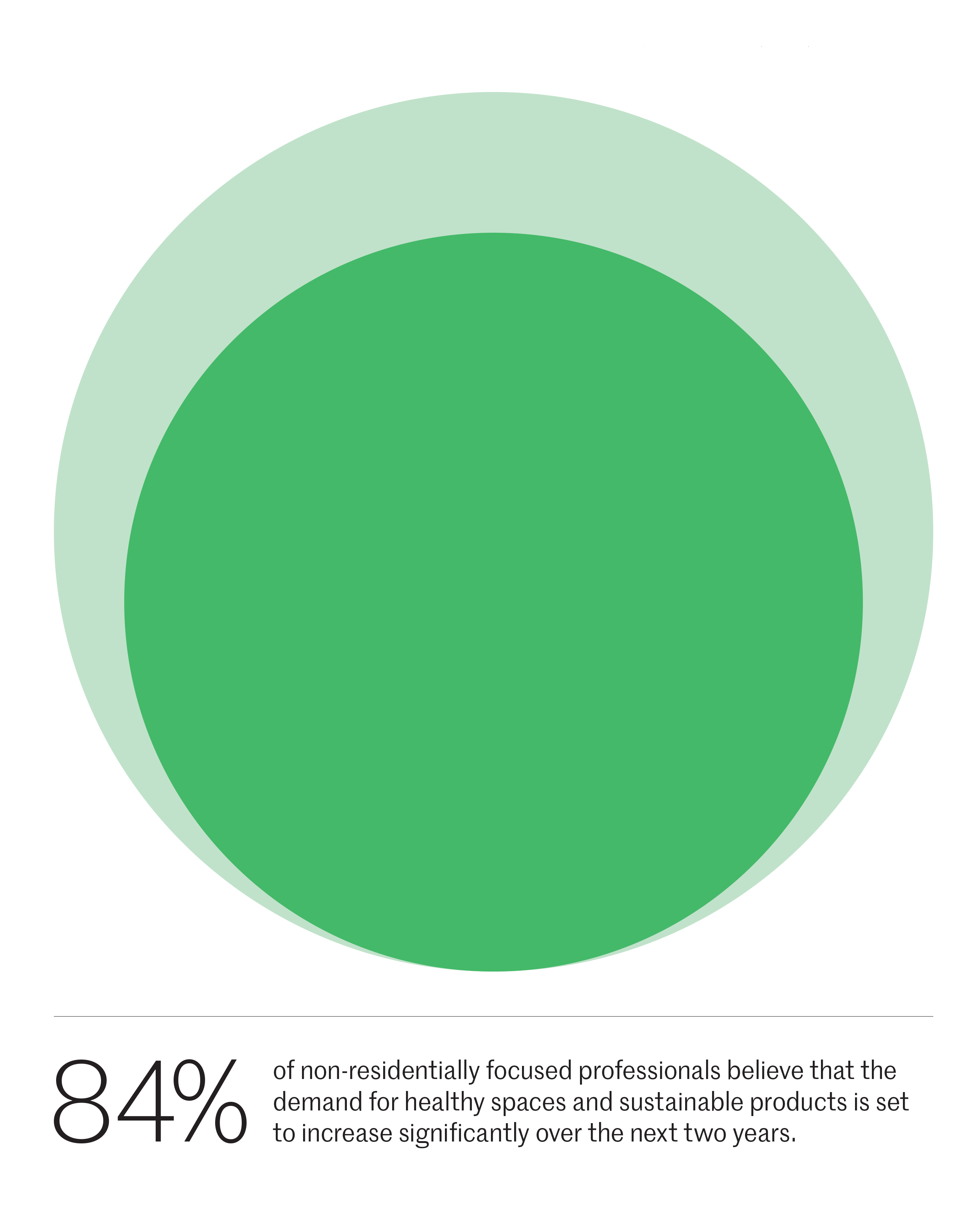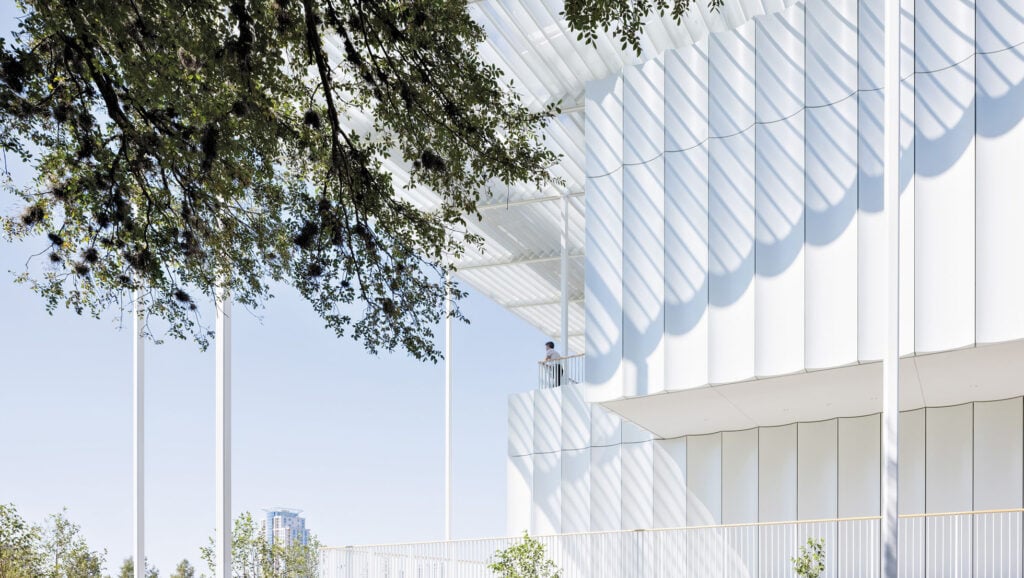
April 16, 2024
How the Design Industry Is Navigating the Sustainability Surge
More than ever, clients seek designs that prioritize health and sustainability. This growing demand is not just a trend; it’s a paradigm shift that reflects broader societal awareness of how our surroundings affect our well-being and the planet. A recent study by McKinsey & Company and NielsenIQ highlights this shift, revealing that 78 percent of U.S. consumers say that a sustainable lifestyle is important to them.
While sustainability has gradually risen in importance over the past decade, ThinkLab’s research into five specifier personas for the design industry and the ThinkLab U.S. Design Industry Benchmark Report for 2024 also suggests sustainable design is gaining momentum:
• 84 percent of contract architects and designers see the demand for healthy spaces and sustainable products significantly increasing in the next two years.
• The “sustainability-first specifier persona” has doubled since 2022.
• 17 percent of architects and designers say sustainability is a top three deciding factor for product selections, up from 8 percent in 2020.

Benefits of Designing for Holistic Well-Being
Holistic well-being encompasses four perspectives: physical, psychological, behavioral, and intellectual. In the context of architecture and design, this means creating spaces that address all aspects of the self (physical, mental, emotional, social, spiritual) and recognizing their interconnectedness and the impact of the built environment on each of these elements.
A recent study conducted by the McKinsey Health Institute, spanning 30 nations and surveying 30,000 workers, highlights the crucial link between employee job satisfaction and performance, and overall well-being. The research underscores the need for companies to rethink work environments and create spaces that foster the holistic health of their workforce.
To that end, architectural and design firms are increasingly incorporating elements to address mental well-being, such as meditation spaces and quiet zones, mothers’ and wellness rooms, biophilic design, water features, access to outdoor spaces, and ample opportunities for movement from gyms to yoga studios and corridors that double as walking tracks.
Architecture and Design’s Powerful Influence
In the built environment, the adoption of sustainable product selection practices is widespread, and with more than 40 times greater purchasing power than the average consumer (as shown by ThinkLab’s Benchmark Report), the architectural and design community has tremendous influence on the demand for ecofriendly building products. And while a smaller portion of the overall design community, the number of “sustainability-first specifiers” has doubled in the past two years, and more broadly, more specifiers consider sustainability a top product selection criterion (17 percent, up from 8 percent in 2020).
Designers are navigating this landscape with innovative materials, energy-efficient systems, and a commitment to reducing the carbon footprint of their projects. The mutual benefit and connected nature of sustainable and human-centered design support an integrated, holistic approach.
Catalysts for Positive Change
As the threads of health, wellness, and sustainability weave together, the tapestry of the future of design unfolds. While the design considerations are many, addressing physical, mental, and environmental health, the industry is up to the challenge, shaping environments that contribute to the well-being of both people and planet.
Erica Waayenberg, LEED AP, is head of research and content at ThinkLab, the research division of SANDOW. At ThinkLab we combine SANDOW Media’s incredible reach in the architecture and design community through brands like METROPOLIS with proven market research techniques to uncover relevant trends and opportunities for the design industry. View the ThinkLab U.S. Design Industry Benchmark Report for 2024 and ThinkLab’s 5 Specifier Personas for the Interior Design Industry research at thinklab.design, and join in to explore what’s next at thinklab.design/join-in.
Would you like to comment on this article? Send your thoughts to: [email protected]
Latest
Viewpoints
Navigating the Path to Net Zero
METROPOLIS mines its archives for pioneering perspectives and projects that prove the possibilities of net zero design.
Viewpoints
Grace Farms Foundation Holds Third Annual Design for Freedom Summit
Industry leaders gather to discuss topics from ethical decarbonization to ways to eradicate modern-day slavery in the materials supply chain.
Viewpoints
The Landscape Architecture–AI Buffer Zone
How long can the idiosyncrasies of landscape architecture keep the promise and peril of artificial intelligence at bay?





